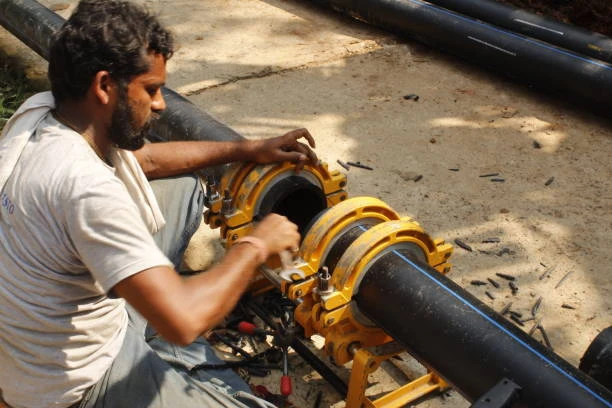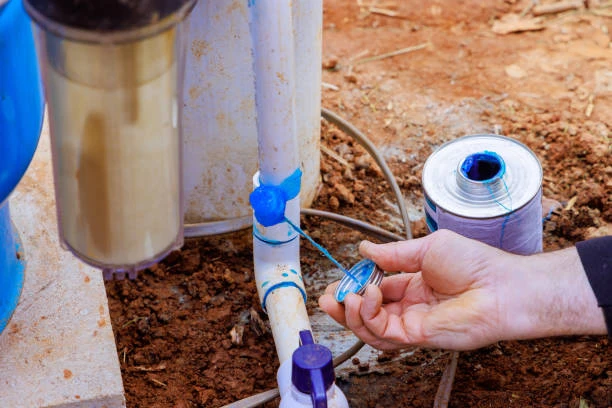The South African Plastic Pipe Manufacturers Association (SAPPMA) recently released its 2023 market study focusing on PVC (Polyvinyl Chloride) and HDPE (High-Density Polyethylene) pipes. This comprehensive report sheds light on industry trends, market dynamics, and future projections, emphasizing the vital role these materials play in infrastructure development and various applications. In this article, we will explore the key findings of the study, the significance of PVC and HDPE pipes, their applications, market drivers, challenges, and future outlook.
Understanding PVC and HDPE Pipes
What are PVC Pipes?
PVC pipes are a type of plastic piping made from polyvinyl chloride, a versatile and durable synthetic polymer. They are widely used in plumbing, drainage, and various construction applications due to their lightweight nature and resistance to corrosion.
What are HDPE Pipes?
HDPE pipes are made from high-density polyethylene, known for its strength, flexibility, and resistance to chemicals and UV radiation. These pipes are often used in water supply, sewage, and industrial applications.
Key Findings from the 2023 Market Study
The 2023 market study conducted by SAPPMA reveals critical insights into the current state and future of the PVC and HDPE pipe markets. Here are some of the key findings:
1. Market Growth
The study indicates a steady growth trajectory for both PVC and HDPE pipes, driven by increased demand in construction, agriculture, and municipal infrastructure projects. The market is expected to expand as investments in infrastructure development rise.
2. Sustainability Trends
Sustainability remains a focal point, with many manufacturers adopting eco-friendly practices. The study highlights an increasing trend towards using recycled materials in pipe production, enhancing the sustainability of PVC and HDPE products.
3. Technological Advancements
Innovations in manufacturing techniques and materials have improved the performance of PVC and HDPE pipes. The study notes advancements such as enhanced jointing methods and improved resistance to environmental stress.
4. Regulatory Compliance
With stricter regulations regarding plastic usage and environmental protection, the study emphasizes the importance of compliance for manufacturers. Companies are increasingly focusing on meeting standards to avoid penalties and enhance their market reputation.
Applications of PVC and HDPE Pipes
Both PVC and HDPE pipes find applications across various sectors, demonstrating their versatility and importance in modern infrastructure.
1. Water Supply and Distribution
Municipal water supply systems extensively use both types of pipes. Plumbers commonly use PVC pipes for distribution lines, while they prefer HDPE pipes for underground water transport due to their flexibility and resistance to ground movements.
2. Agricultural Irrigation
PVC and HDPE pipes play a crucial role in irrigation systems, providing efficient water distribution for crops. Their durability and resistance to chemicals make them ideal for agricultural applications.
3. Sewage and Drainage Systems
HDPE pipes are often used in sewage and drainage systems due to their ability to withstand harsh conditions. PVC pipes are also utilized for drainage solutions, especially in residential applications.
4. Industrial Applications
In industrial settings, PVC and HDPE pipes are used for transporting chemicals, gases, and other fluids. Their chemical resistance and durability make them suitable for demanding environments.
5. Construction and Infrastructure
Both pipe types are vital in construction projects, from plumbing to ventilation systems. Their lightweight nature facilitates easier handling and installation, reducing labor costs.

Market Drivers for PVC and HDPE Pipes
Several factors are driving the growth of the PVC and HDPE pipes market:
1. Infrastructure Development
Increased investments in infrastructure development, particularly in emerging economies, are driving demand for PVC and HDPE pipes. Projects such as roads, bridges, and housing require efficient piping solutions.
2. Rising Water Demand
Growing populations and urbanization lead to increased demand for reliable water supply systems. PVC and HDPE pipes are essential for expanding water distribution networks.
3. Environmental Regulations
Stricter environmental regulations are encouraging the adoption of sustainable materials and practices. PVC and HDPE pipes manufactured with recycled content align with these regulations.
4. Technological Advancements
Continuous advancements in pipe manufacturing technology improve product performance, leading to higher adoption rates. Innovations such as better jointing systems enhance the reliability of installations.
5. Economic Growth
As economies expand, the need for efficient infrastructure increases. PVC and HDPE pipes are essential components in various sectors, contributing to their market growth.
Challenges Facing the PVC and HDPE Pipes Market
While the outlook for PVC and HDPE pipe is positive, several challenges must be addressed:
1. Market Competition
The pipe manufacturing industry is highly competitive, with numerous players offering similar products. Companies need to differentiate themselves through quality, innovation, and customer service.
2. Environmental Concerns
Despite their advantages, plastic pipes face scrutiny due to environmental concerns related to plastic waste. Manufacturers must adopt sustainable practices to mitigate these issues.
3. Regulatory Compliance
Compliance with evolving regulations can be challenging for manufacturers. Ensuring that products meet local and international standards is crucial for market access.
4. Raw Material Costs
Fluctuations in the prices of raw materials used to produce PVC and HDPE pipe can impact profitability. Companies must manage these costs effectively to maintain competitiveness.
Future Outlook for PVC and HDPE Pipes
The future of PVC and HDPE pipe looks promising, with several trends expected to shape the market:
1. Increased Focus on Sustainability
Sustainability will continue to be a major driver, with manufacturers investing in recycling technologies and developing eco-friendly products. The demand for pipes made from recycled materials is expected to rise.
2. Technological Innovations
Ongoing research and development will lead to further advancements in pipe technology, enhancing performance and expanding application possibilities. Innovations in smart piping systems may also emerge.
3. Growth in Emerging Markets
Analysts expect significant growth in infrastructure development in emerging economies, which will drive demand for PVC and HDPE pipe. Companies may target these markets for expansion opportunities.
4. Collaborative Efforts
Partnerships between manufacturers, suppliers, and regulatory bodies can drive innovation and improve industry standards, benefiting the overall market.
5. Adoption of Smart Technologies
The integration of smart technologies in piping systems will enhance monitoring, maintenance, and operational efficiency. Smart pipes equipped with sensors can provide real-time data on flow rates and potential leaks.
Conclusion
The 2023 market study by SAPPMA highlights the critical role of PVC and HDPE pipe in infrastructure development and various applications. With steady growth expected in the coming years, driven by factors such as sustainability, technological advancements, and infrastructure investments, these materials will remain essential in addressing the evolving needs of industries. By embracing innovation and sustainability, manufacturers can capitalize on the opportunities presented by this dynamic market.
FAQs
- What are PVC and HDPE pipe? Manufacturers produce PVC pipes from polyvinyl chloride and HDPE pipes from high-density polyethylene. Both types are widely used in various applications due to their durability and versatility.
- What applications do PVC and HDPE pipe serve? They are used in water supply, irrigation, sewage systems, industrial applications, and construction.
- What factors are driving the growth of the PVC and HDPE pipe market? Key drivers include infrastructure development, rising water demand, environmental regulations, technological advancements, and economic growth.
- What challenges do manufacturers face in this market? Challenges include market competition, environmental concerns, regulatory compliance, and fluctuating raw material costs.
- What does the future hold for PVC and HDPE pipe? The future includes increased focus on sustainability, technological innovations, growth in emerging markets, collaborative efforts, and the adoption of smart technologies.

















